Perhaps you remember that challenging childhood game of pick-up sticks where you had to carefully remove a stick without disturbing the others around it? Well, that nostalgic game has inspired a fun sewing technique showcasing brightly colored channels inset at various angles onto a base fabric.
Whether you use this technique to create artistic fabric for a small project, a section of a garment (like a pocket, collar, cuff, etc.), or for a quilt, it’s sure to provide some fun sewing time. For purposes of these instructions, we’ll refer to the larger piece as base fabric.
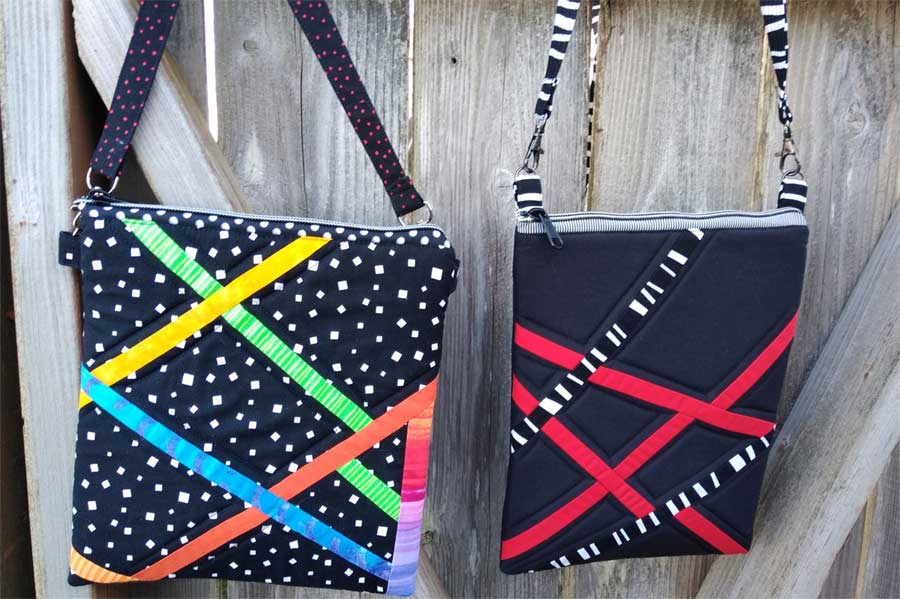
Tools
Rotary cutter, ruler, and mat
Preparation
- Cut the base fabric 1 ½” – 2” larger than the finished size needed. For example, if you’re making a pieced collar, create a rectangle that much larger than your pattern piece.
- Cut the assorted color inset strips 1” wide.
Cutting Up
Lay the base fabric right side up and make your first cut at any angle you like, cutting it into two sections.
With right sides together and raw edges matching, sew one side of an inset strip to one side of the previously made cut. Press the seam allowances toward the inset.
Matching the second side to the adjacent base section raw edges, sew the remaining inset edge to the opposite side of the cut. Press the seam allowances toward the inset. Trim the excess inset length.
Lay the pieced fabric right side up on your cutting mat. Decide on the angle of your next cut and slice it apart again. The second inset can be at any angle and can bisect the first inset or not, depending on the desired effect.
Repeat steps 1-3 to complete the second inset.
Continue in the same manner, slicing, insetting, and pressing until you have the desired look. Three to five insets per piece is an attractive addition. Note that the edges of the base fabric will not be even once strips have been inserted.
Tip: When you slice through an inset and reassemble the pieces, the adjacent inset sections may or may not align, depending on how you position the second section. If you choose to offset them, do so enough that the alignment looks purposeful and not as though it’s just slippage that caused it.
Once the base is complete, press it flat, and trim to the size needed, including seam allowances for further construction. If you’re making a small project or using the pieced section in a garment, cut out the pattern piece(s) from the completed section of fabric.
Beyond the Basics
- This technique can be used on almost any woven or non-woven fabric—think lightweight leather, denim, linen, silk, etc. It can work on knits as well if you stabilize the base fabric with fusible interfacing first to avoid stretching.
- For easier handling, especially on loosely woven fabrics, use spray starch or another pressing aid on the base fabric before starting the piecing to help stabilize bias-cut seams.
- The base fabric can be solid or print and so can the insets, so mix and match for fun.
- The inset pieces can be multiple colors or a single color, depending on the desired look.
- Use the new shapes created by the insets as a guide to quilt the fabric to fleece, foam or batting, depending on the project you’re making. For garments, pre-shrunk flannel backing adds a light touch without adding warmth.
- A single square is ideal as an inset in a jacket back, or turn under the edges and make it an appliqué. Add some piping around the edge to frame the featured section.
~Linda Griepentrog
Linda is the owner of G Wiz Creative Services and she does writing, editing and designing for companies in the sewing, crafting and quilting industries. In addition, she escorts fabric shopping tours to Hong Kong. She lives at the Oregon Coast with her husband Keith, and two dogs, Yohnuh and Abby. Contact her at .





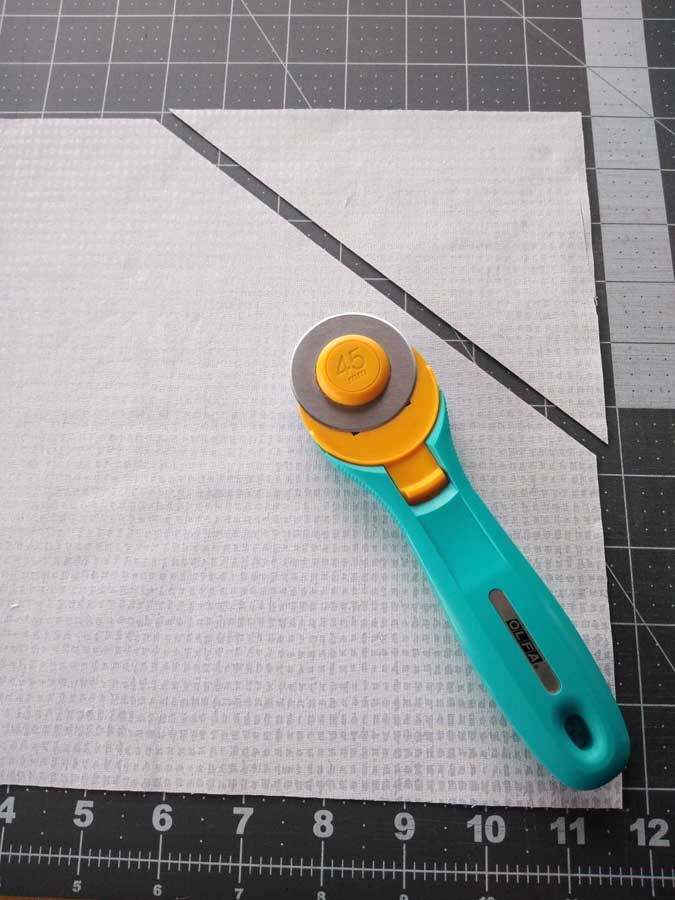
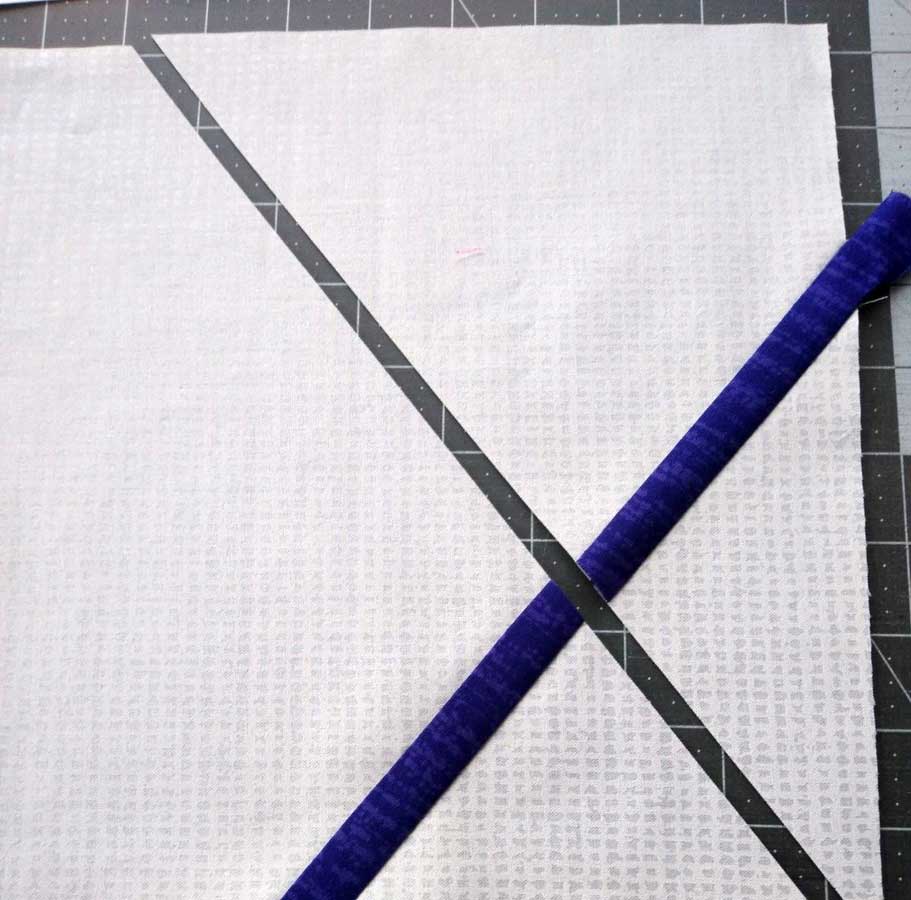
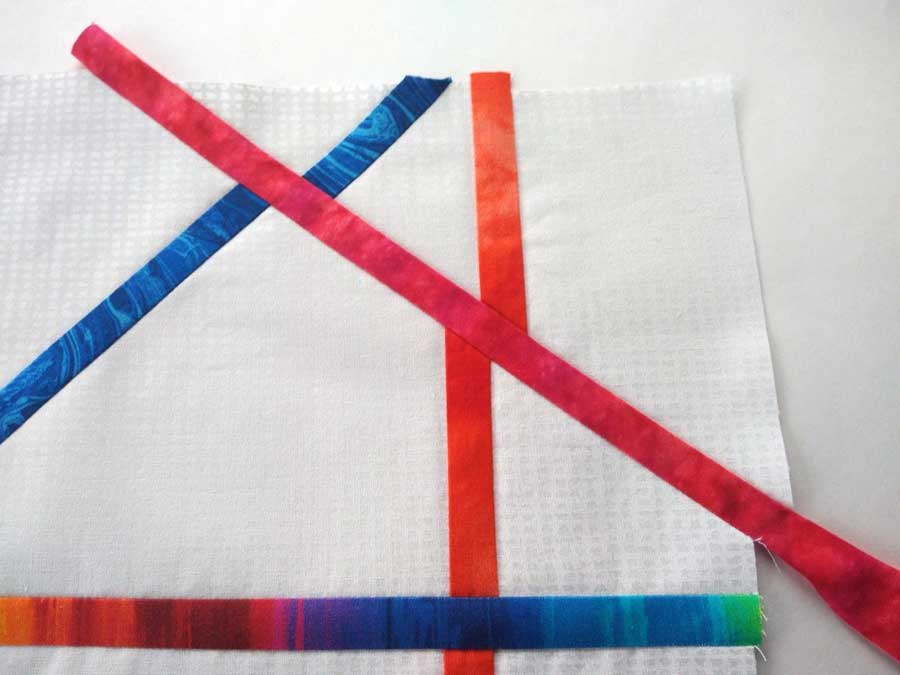
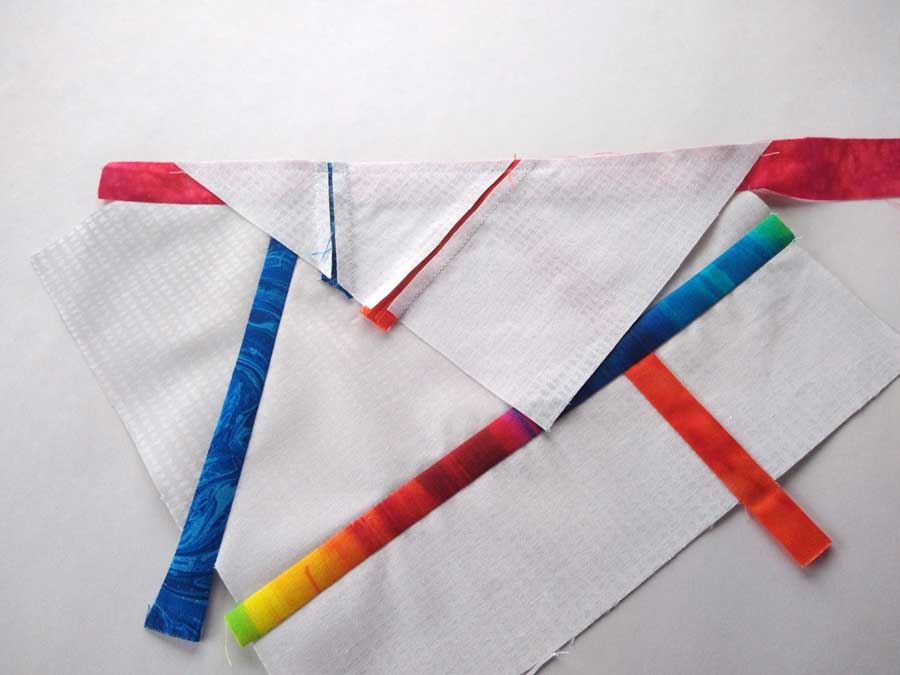
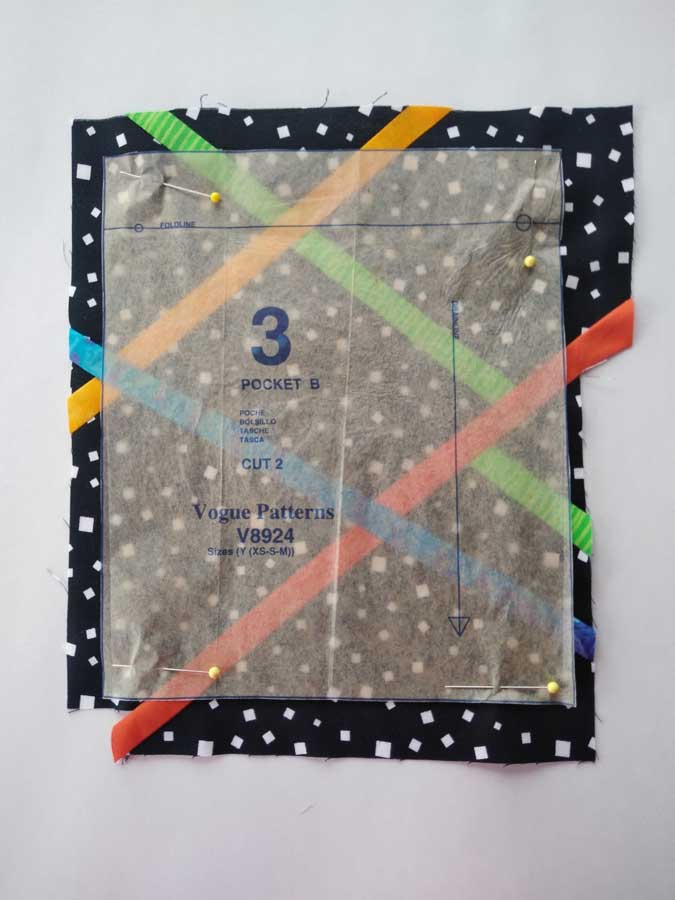
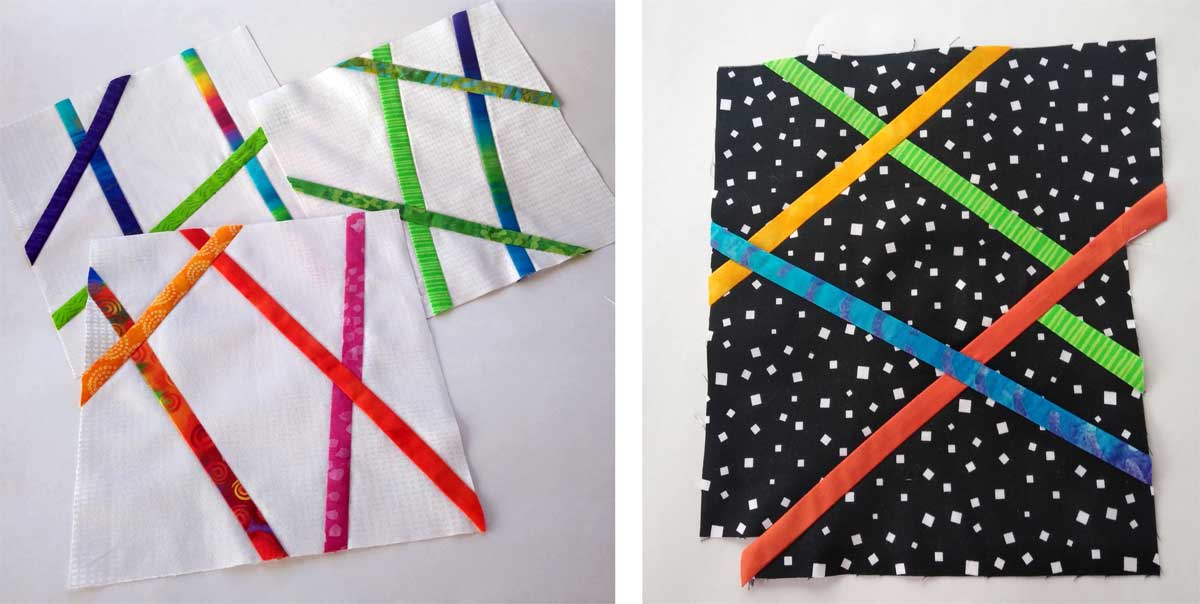
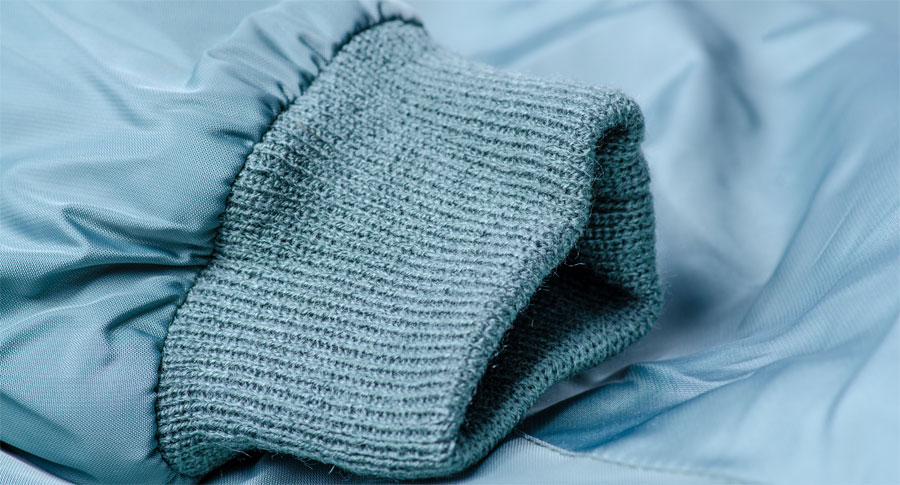
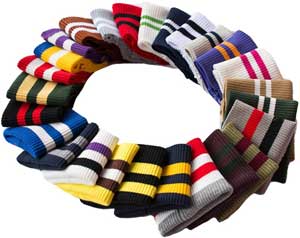
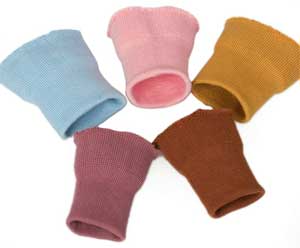
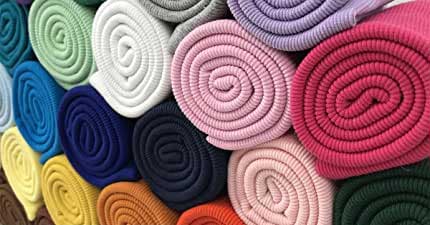
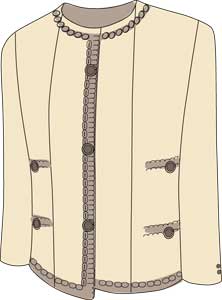 The gilded chain is an attractive, decorative trim on the inside of most Chanel jackets at the hemline, and is one of the most Chanelisms (the term used by the editors of Vogue Magazine to describe distinctive Chanel techniques). The chain is generally made of brass or heavy metal and is used instead of inexpensive lead weights that are hidden between the hem allowance and outer shell in traditional tailored jackets.
The gilded chain is an attractive, decorative trim on the inside of most Chanel jackets at the hemline, and is one of the most Chanelisms (the term used by the editors of Vogue Magazine to describe distinctive Chanel techniques). The chain is generally made of brass or heavy metal and is used instead of inexpensive lead weights that are hidden between the hem allowance and outer shell in traditional tailored jackets.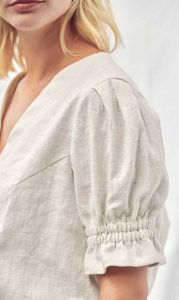

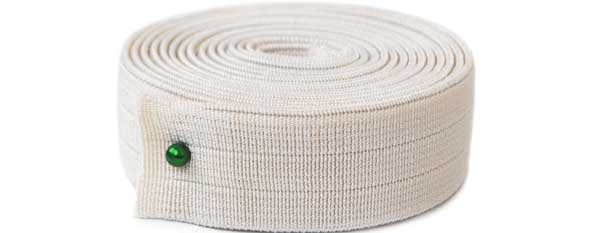
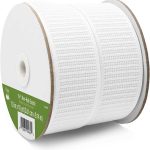
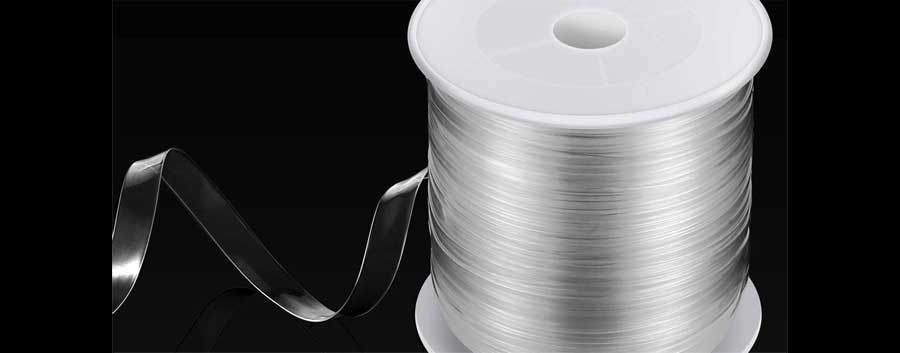





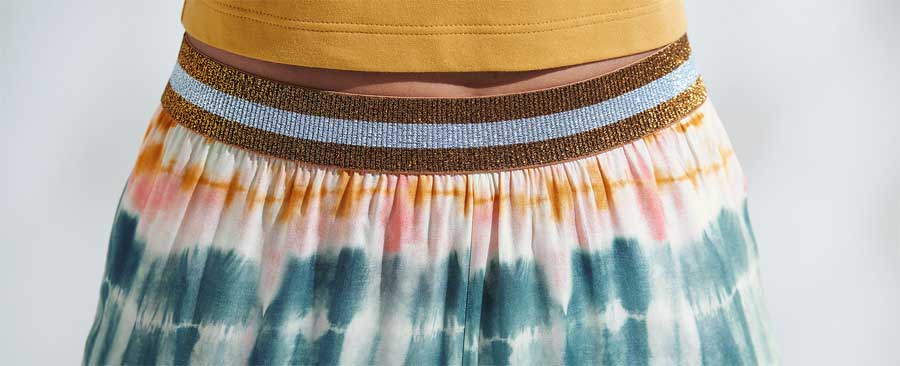
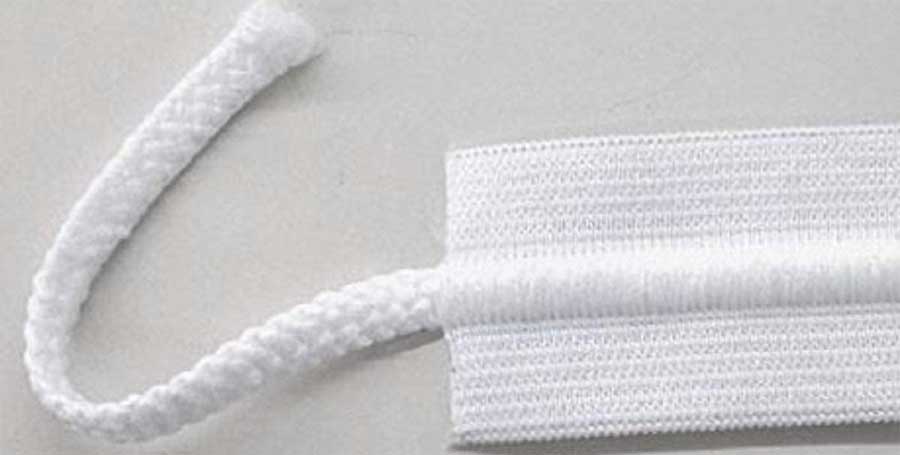
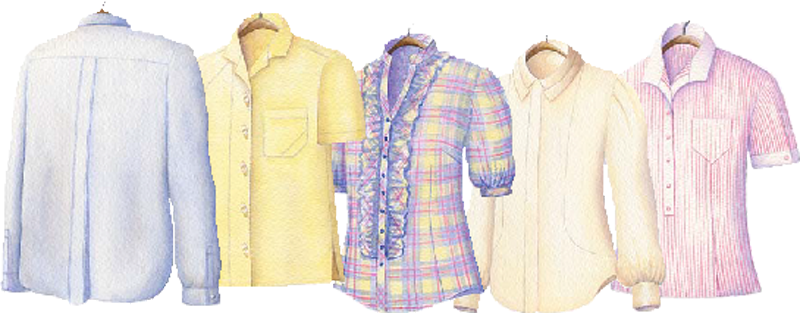

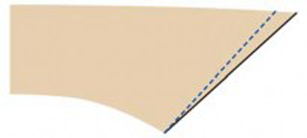
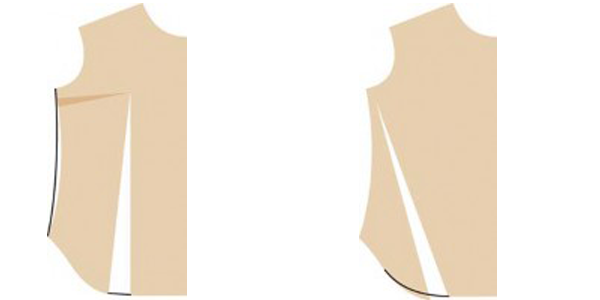
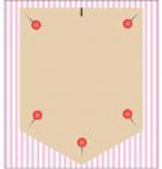 First, change your pocket pattern by reducing the side and bottom seam allowances to 3⁄8″ or less.
First, change your pocket pattern by reducing the side and bottom seam allowances to 3⁄8″ or less.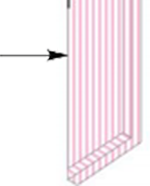 With right sides together, fold the pocket lengthwise from the point of the V to the center mark on the upper edge. Press the remaining bottom and side seam allowances under so that the two halves of the pocket match. Don’t worry if the seam allowances vary in width.
With right sides together, fold the pocket lengthwise from the point of the V to the center mark on the upper edge. Press the remaining bottom and side seam allowances under so that the two halves of the pocket match. Don’t worry if the seam allowances vary in width.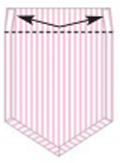 Now we need to address the pocket’s top (hem) edge. Before folding and pressing it into position, slide the top edges of the seam allowances in a scant 1⁄8″. By doing this, you have less bulk when the pocket is stitched to the garment.
Now we need to address the pocket’s top (hem) edge. Before folding and pressing it into position, slide the top edges of the seam allowances in a scant 1⁄8″. By doing this, you have less bulk when the pocket is stitched to the garment.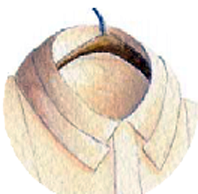 Pleated Collar: This detail works well on a woman’s shirt with a flat collar, i.e., one that has no “stand.” It is very simple to do because the collar is pleated after it is constructed and attached to the neckline of the shirt. Just fold out a 1⁄2″ to 3⁄4″ deep pleat on each front edge of the collar and pin to hold the pleat temporarily. Adjust, if needed, so that the pleat is smooth and a consistent depth all around the collar, then hand stitch the pleat folds in place on the underside of the collar.
Pleated Collar: This detail works well on a woman’s shirt with a flat collar, i.e., one that has no “stand.” It is very simple to do because the collar is pleated after it is constructed and attached to the neckline of the shirt. Just fold out a 1⁄2″ to 3⁄4″ deep pleat on each front edge of the collar and pin to hold the pleat temporarily. Adjust, if needed, so that the pleat is smooth and a consistent depth all around the collar, then hand stitch the pleat folds in place on the underside of the collar.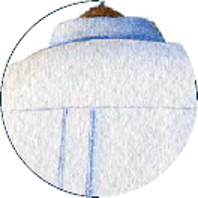 Edge-Stitched Back Pleat: Shirt patterns for men and women may have a center back pleat below the yoke. If not, you can create one by adding 3″ at the center of the shirt back pattern piece. This will give you a 11⁄2″ box pleat, the standard size on most shirts. Then, why not make it more of a design detail by edgestitching the folds? Before attaching the yoke, press the back pleat folds from the top edge to the hem, the entire length of the shirt back. Now, very carefully, edge-stitch along each pressed fold. Attach the yoke and proceed with the construction of the shirt.
Edge-Stitched Back Pleat: Shirt patterns for men and women may have a center back pleat below the yoke. If not, you can create one by adding 3″ at the center of the shirt back pattern piece. This will give you a 11⁄2″ box pleat, the standard size on most shirts. Then, why not make it more of a design detail by edgestitching the folds? Before attaching the yoke, press the back pleat folds from the top edge to the hem, the entire length of the shirt back. Now, very carefully, edge-stitch along each pressed fold. Attach the yoke and proceed with the construction of the shirt.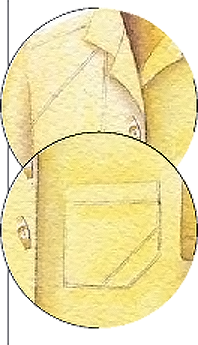 Accent Mini Tucks: Check out the details on these illustrations. What appear to be black lines are actually minute tucks on yellow distressed linen. These tiny tucks, which add dramatic accents to your shirts, require no pattern alterations!
Accent Mini Tucks: Check out the details on these illustrations. What appear to be black lines are actually minute tucks on yellow distressed linen. These tiny tucks, which add dramatic accents to your shirts, require no pattern alterations!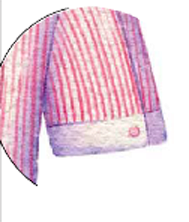 Find the mid-point of the sleeve hem by pressing the sleeve in half. At that mid-point, pinch out a pleat that is 1⁄2″ to 1″ wide. Fold it toward the back or the front (your choice), and secure with a button.
Find the mid-point of the sleeve hem by pressing the sleeve in half. At that mid-point, pinch out a pleat that is 1⁄2″ to 1″ wide. Fold it toward the back or the front (your choice), and secure with a button.